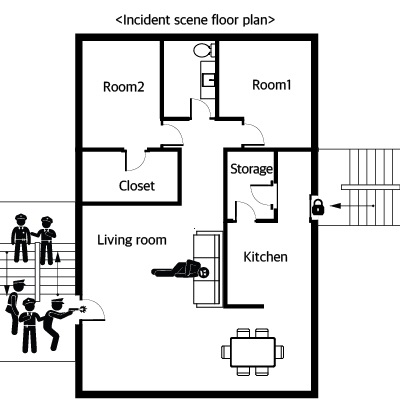The response by the Los Angeles Police Department (LAPD) to the shooting of Korean-American Yong Yang (40), who was suffering from mental illness, highlights numerous issues related to the use of force.
This incident once again demonstrates why the LAPD has the highest number of officer-involved shootings compared to other major city police departments.
The bodycam footage released by the LAPD on May 16 reveals a lack of clear regulations or guidelines for the use of firearms in various situations.
This can be observed in the conversation between Sergeant Ruvalcaba, the supervisor from the Olympic Station, and Min Yang, the victim’s father, upon arrival at the scene.
Sergeant Ruvalcaba informed Min Yang about the potential scenarios that could arise upon entry, stating that “use of force” might be necessary.
The problem is that the term “use of force” encompasses a wide range of situations, including the use of non-lethal weapons and physical restraint.
Without providing a clear explanation of the use of force, Sergeant Ruvalcaba simply said, “He might get hurt.”
The family, who had only considered hospitalization for mental illness, likely did not expect the worst-case scenario of lethal force being used. Additionally, Sergeant Ruvalcaba suggested to the family that they could have their son forcibly removed from the house and arrested for trespassing.
This caused Min Yang to hesitate and ask, “So this is being treated as a ‘criminal thing’?” Sergeant Ruvalcaba briefly responded, “Yes.”
It is not easy for a layperson unfamiliar with law enforcement to accept the police’s suggestion of having a family member arrested for a criminal matter.
Issues also surfaced in the decision-making process for the officers’ entry. After speaking with the family, Sergeant Ruvalcaba asked the surrounding officers who would take the lead in approaching Yang.
There was even a scene where officers simultaneously hesitated and raised their hands when asked who would use the “less lethal” weapon. This indicates that the roles in responding to dangerous situations were arbitrarily assigned.
The basis and criteria for deciding the use of force were also unclear. Despite two failed attempts to communicate with Yang, the officers were fully aware that he was suffering from mental illness based on their attempts and the family’s testimony. Until this point, there was no threatening situation.
Sergeant Ruvalcaba suddenly said, “We’re going to have a use of force.” There was no threat other than Yang’s non-compliance with the officers’ requests to come out and the lack of communication. This raises questions about the basis for the decision to use force.
The forceful entry procedure for a mentally ill person also poses a problem. During the third entry attempt just before the shooting, the lead officer suddenly asked his colleagues, “Call out or no call out?”
At this point, the officer was already attempting to unlock the door. For Yang, who was likely experiencing extreme psychological distress due to repeated police pressure, the sound of the door handle rattling and the forced entry would have been perceived as an even greater threat.
In this tense situation, another officer finally shouted, “Call him out,” and then yelled, “We are the police. Mr. Yang, come out.” They then forced open the door, capturing the terrified Yang on bodycam footage.
The response method and whether shooting was the best option are also questionable. The bodycam footage shows that the officer assigned the non-lethal “bean bag” gun was standing at the back. This clearly reveals the LAPD’s poor response policy.
The lead officer did not have his gun drawn when opening the door. Only after recognizing Yang with a knife did he hurriedly draw his gun, indicating a lack of preparation for various scenarios and no contingency plans.
This is further evidenced by the actions of the officer with the non-lethal “bean bag” gun standing behind. As the lead officer retreated and drew his gun, shouting “drop it,” there was no attempt to use the bean bag. It raises doubts about whether the officers had any intention or plan to safely bring Yang out.
After the shooting, the police handcuffed Yang, who had collapsed on the couch. His body was already limp, and his eyes were unfocused, clearly indicating he was not in a state to resist the police. Despite this, the officers continued to shout at him not to move and not to put his hands in his pockets while removing his shirt to check for gunshot wounds.
Yang was not a criminal. This tragedy resulted from the LAPD’s poor response.
BY YEOL JANG [jang.yeol@koreadaily.com]





